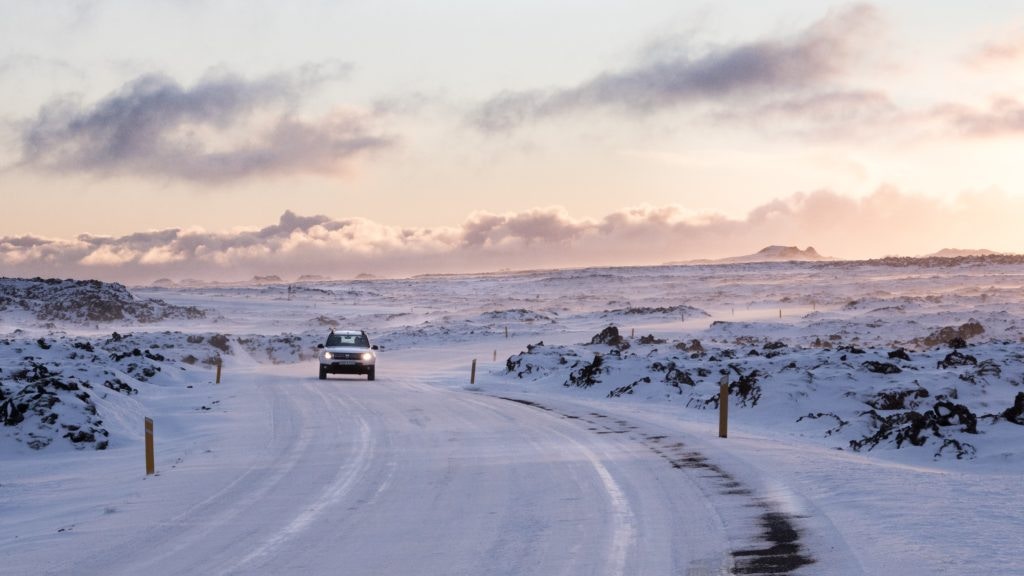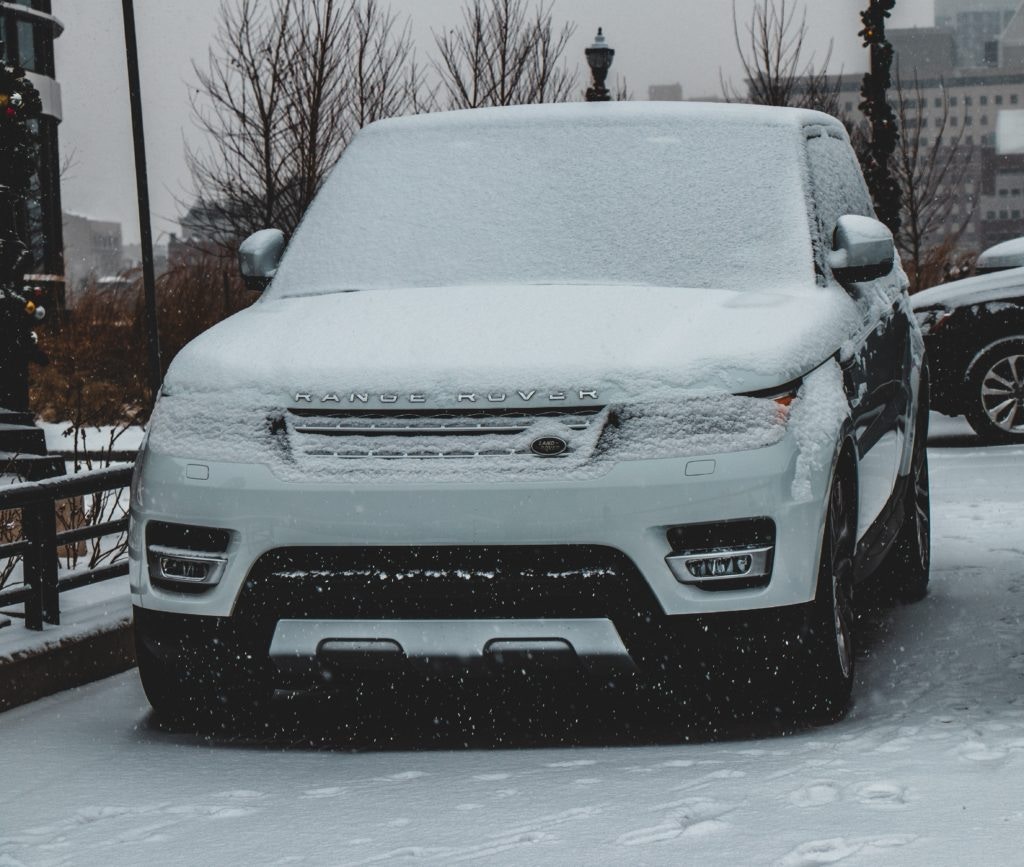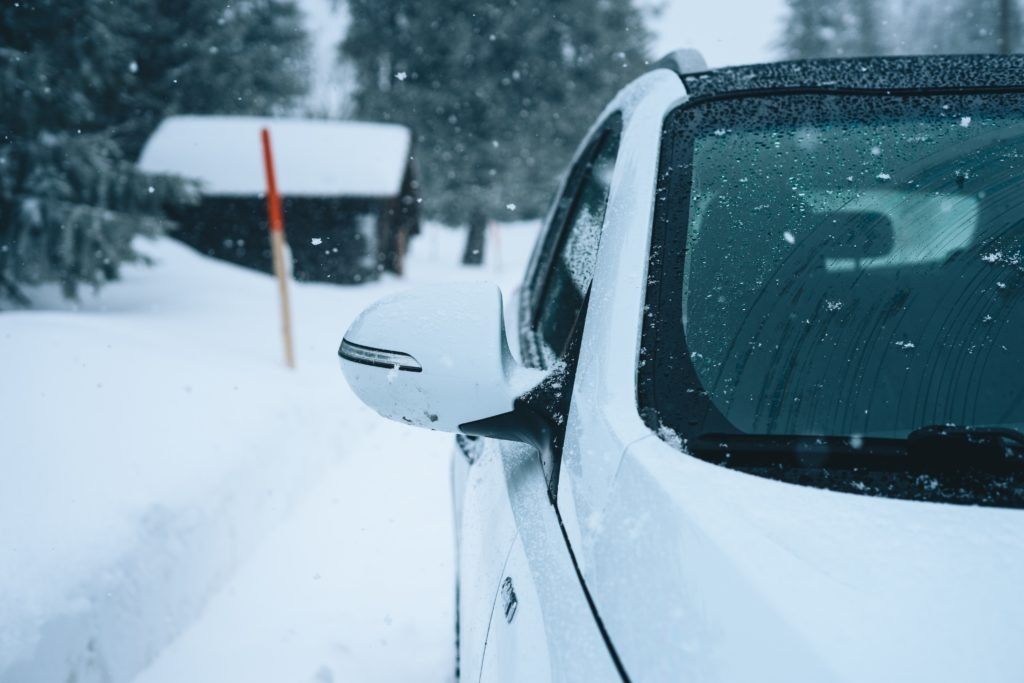Winter driving 2025: Safety tips for snow and ice

The winter months are here. While that means perfect weather for snow men-building and romantic walks through the snow, it can also be a seriously dangerous time for drivers. Weather conditions over winter can play all sorts of havoc on your vehicle and your ability to drive it.
Even the most confident driver is sure to feel nervous when tackling an icy road, or driving through a snow flurry. We may not be able to stop the snow and ice, but we can share some great tips to help make driving in winter that little bit easier.
Preparing your car
Whether you’re driving in the snow for the first time or have been driving safely in snow for years and years, safety should always be your priority no matter how many times you’ve done it before. Here are some winter driving safety tips all drivers should know.
1. Get preparing your car early
The Great British Weather means you can never be too sure when snow and ice are going to hit. So make sure you’re prepared, no matter what the weather throws at you. Give your car a quick once over to make sure it’s up to the task of winter driving. This includes:
Topping up your antifreeze
Antifreeze is, as the name implies, the magical ingredient that protects your car engine from extreme temperatures. Make sure your engine has the correct levels of antifreeze so it can stand up to the cold snaps that are no doubt incoming. Antifreeze doesn’t need to be changed all that regularly (approximately every 30,000 miles) but if you know it’s been some time then definitely make sure you take the time to run this essential maintenance. It could be the difference between being cosy at home or being stuck in the snow.
Checking your brake fluid
You’re going to be feeling very grateful for your brakes when winter rolls around. You shouldn’t rely heavily on your brakes when driving in the snow and ice, but you definitely want to know they will work when you need them. So, make sure your brake fluid is at the correct level, so you can maintain the best control over your car in conditions where it’s key.
Checking your car battery
A healthy car battery is always important, but that’s emphasised in the winter months. A car service can help ascertain your car battery’s condition. Even if you don’t plan to drive through the winter, for example, if you SORNed your car, it can be worth getting a trickle charger to make sure disuse and cold weather don’t do a number on your battery while you’re not looking.
Making sure your windscreen wipers are in good condition
You’ll not be getting very far if you can’t get the snow off your windscreen! Make sure your windscreen wipers are up to the job of getting through another cold season, and if not, swap them out for new ones. You should also add regular screen cleans to your routine as salt, grit, water marks, and dirty snow can all leave your vision obscured in no time.
Cleaning your car (or at least the headlights)
Winter leads to all sorts of new dirty obstacles for your car, including road grit, snow, and muddy slush on top of all the regular things that make your car get grubby. A regular wash of your car is always recommended, but if you just don’t have the fortitude for a chilly car wash then at least keep your headlights clean. Not only does this improve your own visibility, it also means other drivers can clearly see you even when snow fall hides the rest of your vehicle.

2. Have the essentials to hand
You hear it every year on the news, but have you actually gone ahead and made sure your boot is stocked with everything you need for driving in winter? Being trapped in snow is a common issue for many drivers when snow and ice are forecast. You’ll be surprised how cold it can get sitting in your car — especially when you can’t run the heater to save your battery. So, make sure you have all of the below to see you through a snowed-in wait in your car, or, hopefully, prevent it happening at all:
- De-icer
- Shovel
- Jump leads
- Torch
- First Aid Kid
- A piece of carpet or sack for freeing snowed-in wheels
- Warning triangle (you should be carrying this anyway!)
- Blankets/dry change of clothes
- Bottled water
- Phone power bank
- Emergency food (like cereal bars)
You might want to also add other useful accessories like instant hand warmers and maybe some boredom busters like a book or board game. It can be hard to know how long you’ll be stranded when you depend on the weather clearing up, so there’s no harm in being cautious and packing for the worst scenario.
Another thing to consider is something hi-vis to wear when you need to leave your car, even to visit the boot (tip: you should never leave your car to try and make your way on foot) as other drivers will have lower visibility for pedestrians as well as cars.
3. Stay legal when it comes to tyres
You’ll want to check your tyres more often for winter driving than for other times of the year, as slippery conditions make correct tyre depth essential. The minimum legal depth is 1.6mm but you should aim for a little closer to 3mm. Every little helps when it comes to driving on snow and ice — you’ll want all the grip you can get.
If you live in a particularly rural area, you may consider snow chains, but this will only be particularly effective in very deep slow, and can damage both your tyres and the roads if used in relatively clear conditions.
4. Prepare yourself
Getting your car ready for winter driving is one thing, but it’s also a very good idea to get yourself up to speed on all-weather driving well before the snow arrives. Pass Plus driving courses cover these scenarios with a qualified driving instructor, as well as other driving types like night driving and motorway driving. Depending on when snow hits and how bad it is, you might end up doing snowy, nocturnal, motorway driving so any extra exposure to professional training is sure to be beneficial!

Tips for driving in snow and ice
Ok, your car is prepared, now you need to know how to drive it! No matter how long it’s been since you passed your test, winter driving never seems to get any easier. And you shouldn’t act like it does, either. Vigilance and caution is key to staying safe when driving on slippery winter roads — your fellow drivers will thank you!
1. Drive slow
This one goes without saying but you’d be surprised how many people don’t reduce their speed for ice. It’s not only dangerous to you, and the condition of your car, it’s dangerous to everyone else on the road. It’s extremely easy to lose control of your car on icy roads, and that puts everyone from drivers to pedestrians in danger. Take it slow.
2. Keep a safe distance from the car in front
Snow means low visibility, it also means your brakes are less effective. Make sure you keep a good distance from the car in front so you don’t run the risk of driving into them. Plus, while you want to make sure you keep safely away from others, you want them to do the same. Make sure your lights are on so your fellow drivers can see your position on the road.
3. Take it up a gear
Slow and steady wins the race home through the snow. While you should keep your speed down, you should drive in as high a gear as possible to give you better control in difficult conditions. You should try your best not to overwork your brakes, instead, use less acceleration. Don’t expect your car to do all the work, either. Sure, you might drive a Jeep and think your all-terrain vehicle will make light work of the snowy roads, but failing to take the weather seriously enough can make you a threat to others on the road, as well as yourself.
4. Don’t go
In adverse weather conditions, you shouldn’t travel unless absolutely essential. So, before you even get in your car, ask yourself if you really need to.

Tips for maintaining your car’s value during the winter
While winter won’t forever, the effects it has on your car just might. Winter driving is about more than prepping your car and steeling your nerve. You also need to think about keeping your vehicle components at their best to maintain car value. A poorly cared for car that has struggled through winter may not have a very pleasing car valuation!
1. Consider winter tyres
If you want your car’s value not to plummet along with the temperature, consider giving it a winter wardrobe. Winter tyres can help eliminate the issue of worn out tyres dragging its value down. You simply put them on for the cold season and switch back to your regular tyres when things warm up again. This can also help your normal tyres last longer and is worth considering if you live somewhere that always gets heavy snow.
2. Check for pre-existing damage
Whatever damage your car currently has, harsh weather will almost certainly make it worse. Whether it’s a spot of rust, a poorly performing car radiator, or a bad water pump, the incoming frost isn’t going to help these things improve. After a bout of snow, you may find the repairs needed are now looking pricier than they did before. So, while the sun is still shining and the roads are still clear, consider getting your car serviced. This way, it can head into winter equipped to handle anything the weather can throw at it.

3. Make sure your battery doesn’t take a battering
Looking after your car battery is important at any time of year, but this is doubly true in winter. It’s also something you definitely want to keep in mind if you have an electric car. EV batteries can be sensitive to cold temperatures. Try to avoid parking your electric car somewhere exposed to the elements. If you have no choice, for example, when publicly charging your electric car, at least make sure there is no build-up of snow beneath. Taking extra car of your car in the winter will help it run just as well come spring. And be just as attractive to dealers.
4. Don’t say ‘that’ll do!’
Boiling water on the windscreen, Vaseline on the door seals, WD-40 on the locks…these are all easy solutions to the problems of winter, but none of them are recommended. Failing to prepare and being forced to use these to-hand items instead of suitable products can damage your car’s value. This is even more important if you’re planning to sell. Vaseline will degrade the rubber of your car seals, and after a winter of application may leave you with a hefty repair bill. WD-40 is not a sensible alternative to proper car lubricant, and, well, we shouldn’t have to tell you not to pour boiling hot water on a freezing cold windscreen — crack!
5. Keep things clean below deck
Like we said, your car will thank you for regular washes throughout the season, but the underside of your car is where you want to concentrate, too. The salt put down on snowy roads can build up on this part of your car and can lead to corrosion. Make sure you’ve cleared it all off long before that can happen. You can buy special attachments for hoses to do a really good job of this, though you can also do it without any extra equipment. Remember to go around each wheel arch, too.

Frequently asked questions about winter driving
What are the best winter driving techniques?
There is no secret ‘technique’ for winter driving, because the only sensible technique is caution. Go slow, don’t over use your brakes, don’t dare to try and ‘power through’ a snow drift. Most important of all, don’t drive into inclement weather if you don’t 100% need to. Driving in snow and ice is always dangerous, no matter how many times you’ve done it before.
Is my car worth less in winter?
There’s no reason your car — provided it hasn’t taken a beating from the elements — should be worth less in winter. Several things such as the general slow-down of the festive season can make this seem like the case. Of course, you should take things like depreciation into account but based on season alone, your isn’t any less desirable for no other reason than that it’s December rather than in June. Unless, of course, it’s a convertible, those are always more popular in the summer!
Can I use my fog lights for driving in snow?
Yes, if the loss of visibility demands it. Do not automatically use your fog lights simply because it is snowing and you still have decent visibility, you will only dazzle other drivers and this can be extremely dangerous. The same rules apply for using your fog lights generally — if visibility is less than 100 metres, turn them on.
Is it safe to drive an electric car in the snow?
Yes. Electric cars are as reliable as any other type of car, but one thing to bear in mind is that your range may be less than usual. Cold weather impacts the performance of your electric car’s battery charge, you may notice a loss of as much as 30%.So, if you do head out into the snow, be prepared to make an extra charging stop and consider an electric car service just before the cold snap to make sure your battery is healthy.
Can new drivers drive in snow?
Technically, yes, once you pass your driving test you can legally drive a car, there are no stipulations on weather. However, a new driver, and even more experienced drivers, are sure to be nervous when navigating icy roads. This is why it is worth taking a Pass Plus course to build a foundation of knowledge for these situations.
Is it bad to wash your car in the winter?
Keeping your car clean in winter is essential for guarding against dirt, grit, snow, and slush. This build-up can ruin your car’s under carriage or paintwork. However, you should avoid doing this if temperatures drop too low. This may just lead water to freeze directly on your car. And if that’s on your windscreen that can mean obscured vision, and a tough time with the ice scraper, which can also lead to scratches.
Need to sell your car?
Want to learn more about owning, maintaining, and selling your car? Check out more of our guides here, covering everything from Clean Air Zones to car tax, and plate changes to part exchange.
Top 10 tips to sell your car
How to sell a car privately
HPI check — the ultimate guide
The ultimate guide to PCP finance
Guide to personal car leasing
Car trade in value – get your highest offer
How much does mileage affect car value?
Is my car worth less after an accident?
What is diminished value?